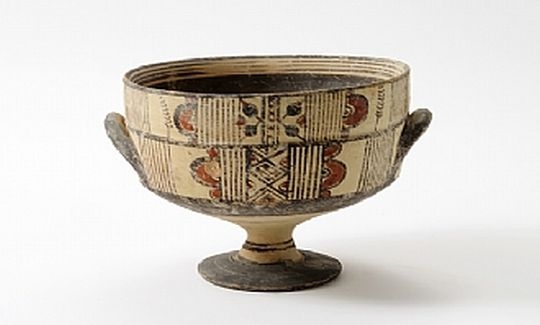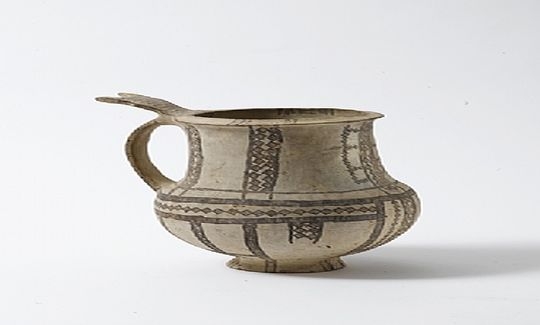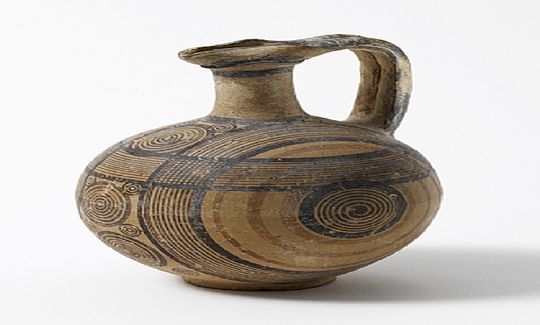Cypriote Pottery in Ancient Times
Friday, 30.12.11
Saturday, 11.08.12
:
Avshalom Zemer
More info:
046030800The exhibition sheds light on the charms of pottery embellished in a great spectrum of designs and colour. Items are displayed dating from the Early Cypriote era up to the Cypro-Classical era, vessels for daily use on the island and for export.
Cyprus, in the eastern Mediterranean basin, received little attention from archaeologists until the first half of the 20th century. The pioneer was Professor Einar Gjerstad, who led a Swedish expedition working on the island in 1927-1931. Cyprus's independence in 1960 gave impetus to archaeological excavations, and the island is recognized today as an invaluable source of material about ancient cultures in this region of the Mediterranean. The island lies on the maritime routes of the eastern Mediterranean, making it an important centre whose material culture influenced and was influenced by those arriving and departing from it in antiquity. Its geographic advantages - including copper deposits and accessible anchorage for shipping - attracted the ruling powers of the time, which had a marked influence on the creation of its culture. The island became renowned for its trading connections, and in particular for everything concerned with marine transport and advanced technologies of ship building. It was also one of the most important areas of the eastern Mediterranean basin for the production of copper.
Cyprus is also known for its crafts that integrate original Cypriote motifs with foreign influences, one of the few places in the region in which craftsmen have continued to make the traditional artistic styles and designs for centuries.
Cypriote pottery is of the same character, comprising the integration of local and foreign components. It attracts attention both for its elegance of form and for its characteristic colourfulness. Until the Iron Age, pottery was hand made. This was followed by throwing and decorating on the wheel. The earliest pottery is dated to the Neolithic-Pottery era (4500-3800 BCE), and includes burnished red and dark brown vessels, often decorated with wavy lines applied with a comb-like tool. In the Chalcolithic period (3900-2500 BCE), pots were decorated with abstract foliage motifs and geometric patterns in red and/or brown on a white ground. In the Early Cypriote era (2500-1900 BCE) the vessels' surface was of polished red or black, sometimes with incised geometric patterns or with human or animal forms in relief. In the Middle Cypriote era (1900-1600 BCE) embellishments consisted of geometric patterns and lines, latticed squares, lozenges, and straight or wavy lines painted in dark colours on a white ground. Until that time little pottery had been exported from Cyprus. By the Late Cypriote era (1600-1050 BCE) the pottery was of very high quality, and export trade to the lands of the eastern Mediterranean basin and the Aegean Sea flourished. The Cypriote "White Slip" and "Base Ring" wares were exported to those areas, and there was a broad range of imports on the Syrian-Canaanite coast, where Cypriote items have been found in settlements from the Late Bronze Age. In the Cypro-Geometric era (1050-750 BCE) decorations on pottery were mainly geometric, but there were also human and animal figures, and plant designs. During the 10th and 8th centuries BCE, the "Black-on-Red" ware, known also as "Cypro-Phoenician" pottery, was very prevalent, and researchers have concluded that they almost certainly were produced in Cyprus. In the Cypro-Archaic (750-480 BCE) and Cypro-Classical (480-310 BCE) periods, the most prevalent were the red-polished wares with geometric, linear, concentric-circle and plant designs in black and white. In the Cypro-Classical items, a strong classical influence is evident, both in the forms and decorations, a trend that also developed in the Hellenistic (310-30 BCE) and Roman (30 BCE - 330 CE) eras.
The exhibition is based on the findings from Shikmona excavations and on the collection of Dr. Alexander Roche, founder of the Museum of Ancient Art in Haifa and its first director. In 1995 this collection was amalgamated with that of the National Maritime Museum.



